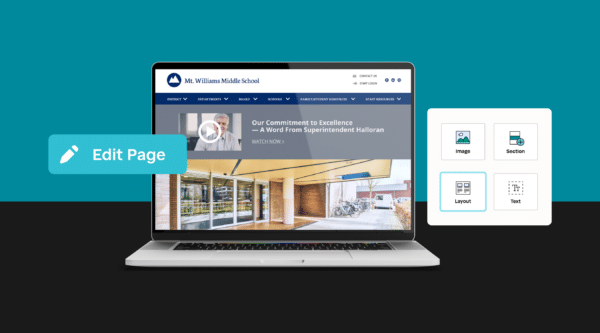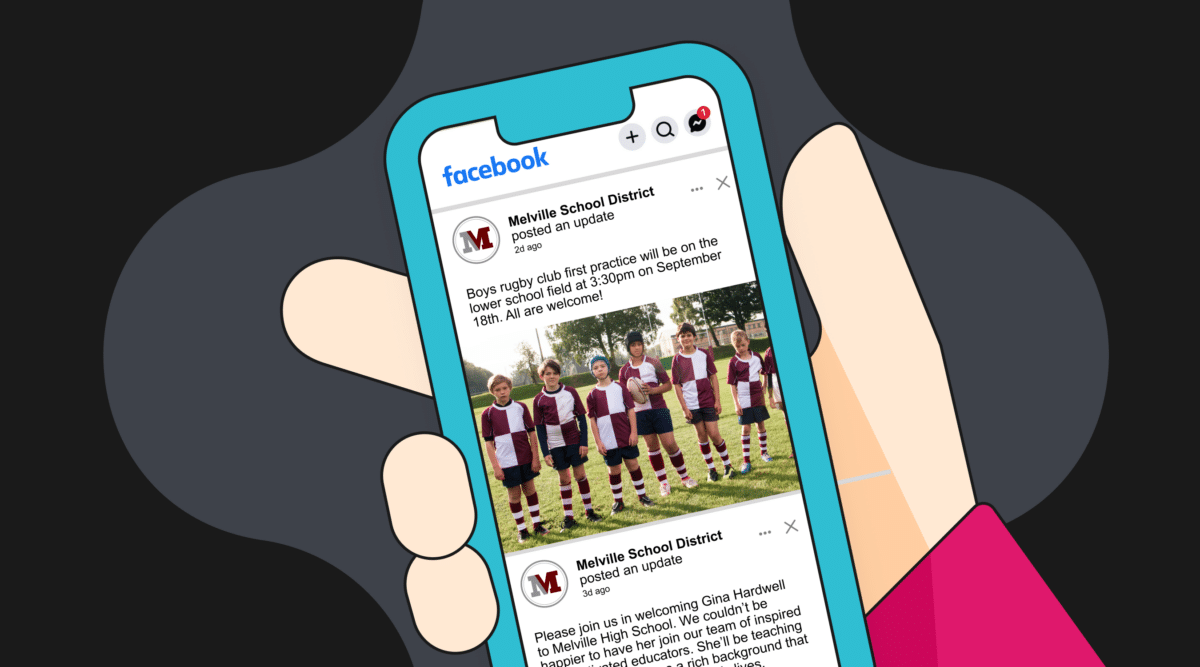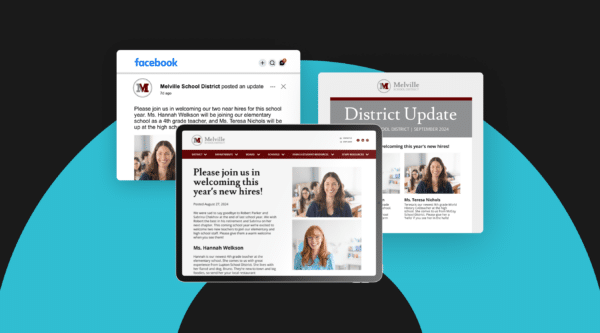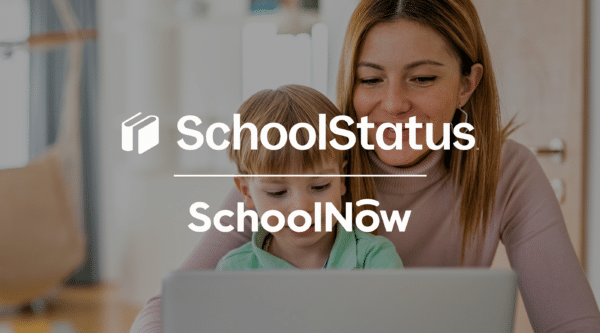

In today’s digital age, social media has become an integral part of our lives, serving as a primary source of news and information for many. Recognizing its power and permanence, schools are now harnessing social media to enhance family engagement and improve communication.
School communicators are adapting to this landscape, using social media platforms to share information, listen to their community, promote initiatives, and ultimately improve educational outcomes. A well-structured social media program can effectively convey your school’s values and culture, helping to build and maintain the reputation you desire.
The Guide to School Social Media is designed to help you navigate this digital terrain. It explores the potential of social media in educational settings and outlines steps for creating the mission, structure, policies, and processes for integrating social media into your overall school communications.
We’ve included resources and tools to support your school as it embarks on its social media journey.
Table of Contents
Chapter 1: Why Social Media Matters to Schools
Chapter 2: Building a Social Media Structure
Chapter 3: Creating a Social Media Process
Chapter 4: Tips, Tools, and Resources
Chapter 1: Why Social Media Matters to Schools
Many in your school community are relying increasingly on social media to stay in touch with what matters most in their daily lives. Even though it’s become a preferred method for sharing information, many schools are reluctant to embrace it. In this chapter we’ll explore how social media can be one of the best ways to tell your school story and spread your messages across your community.
The Preferred Method for Sharing
The number of social media users continues to rise. The workhorses: Facebook, Instagram, Twitter, and YouTube continue to haul the load, but as new social media networks emerge, everyone around the world—and certainly in your school community—is leaning on social media to access and share what’s important to them.
According to the Pew Research Center, 3 out of 4 Americans are using social media daily. Over 80% of the U.S. population watches at least one YouTube video every day. Does your school have any content on YouTube? Or, imagine a LinkedIn group of influential supporters of your school whom you could instantly share achievement results with, school levy info, alumni and fundraising news. Is your school on LinkedIn?
Social media has become the lingua franca and it ought to be part of your school’s communications strategy. Some say it should even be part of your school curriculum, teaching students how to use it responsibly and effectively. Your student’s take-home school info packet is no longer the manilla envelope. It’s right there on both of your phones!
It’s time to get social. Social media is no longer the afterthought to a vital school communication plan. In fact, it’s a strategic element that needs to integrate into all digital communications.
It’s time to get social.
Social media is no longer the afterthought to a vital school communication plan. It’s a strategic element that needs to integrate into all digital communications.
The Underutilized Digital Channel
While social media is being used as a viable communications tool by some schools, it still trails other digital communication channels such as text and voice notifications, websites, mobile apps, and email.
Even for those schools that are using social media, many are hardly maximizing the potential for driving communication goals.
There’s nothing more grassroots than social media. From U.S. presidential elections to school board contests, social media can have a profound impact. For public schools faced with school levies on ballots, social media activity can often bring out motivated voters and swing results to one side or the other. How many public schools are factoring social media into their campaign strategy?
Both public and private schools can implement a social media strategy to boost enrollment and strengthen bonds with their stakeholders, galvanize school supporters, and bolster community backing.
Many schools still do not have a social media policy in place. And while more and more schools are beginning to adopt social media plans, the defensive stance some schools are taking may limit the true potential of all the positive things a social media program can provide. You have the leeway and discretion to make your own social media policies, so before it’s too late, get moving in the right direction and put yours in action.
Get out in front of social media, before you find yourself behind it.
Don’t forget the kids.
Many school communications plans ironically neglect—if not totally overlook—the role students can play in delivering messaging. They are all about sharing. Be sure to factor students into your communications mix. Find some student ambassadors who can haul the load when it comes to sharing your school stories.
Reaching your entire school community in today’s digital, mobile world requires a mindset, strategic approach, and the tools to connect how and when your audiences prefer.
Using Social Media to Tell Your School Story
Taking an active role in your school’s social media gives you the ability to tell everybody about all the great things happening in and around your school. Schools will forever be associated with being a cornerstone of the community, so telling your school’s story helps position it as a community asset for educating future generations.
But much more than just telling your story, it’s about listening to and sharing with your school community. Facilitate a dialogue that brings everyone closer to your school!
We all know how important listening is in the communications process. Creating better ways to listen is an important benefit of a social media program that helps strengthen the family-school-community partnership. With all of the social media channels and 24-hour access, harnessing them as a communications tool gives teachers, school administrators, and your school’s stakeholders many chances to learn more about the issues percolating among parents and throughout the school community.
Online surveys have revolutionized how schools gather feedback. With these tools, you can quickly create surveys and instantly understand your audience’s views on various school issues. This speed allows for rapid assessment of opinions, efficient collection of input, and improved listening to your community.
Additionally, social media monitoring tools let you track conversations about your school in real-time. This capability opens up new opportunities to listen more effectively to your stakeholders, respond promptly and strategically to concerns or praise, and shape your school’s message based on community feedback.
Social media is a powerful tool that goes beyond enhancing your school’s media relations. It gives you the ability to publish and share content while maintaining full editorial control, allowing you to manage your message effectively.
The multi-faceted nature of social media extends its usefulness beyond simple message delivery. It can be leveraged to energize your audience and build a dedicated following. By including embedded links in your posts, you can drive traffic to your website or other platforms, providing your audience with more opportunities to engage with and learn about your school.
These digital channels create numerous opportunities for both one-on-one and broader dialogues, effectively surrounding your audience with your messaging. Social media facilitates personal and responsive conversations with your stakeholders, families, staff, students, and the wider community. Through these interactions, you can strengthen your school’s image and solidify its place within the community.
Chapter 2: Building a Social Media Structure
Establishing an effective social media program for your school or district requires a solid foundation. This begins with a firm commitment to success and culminates in dynamic engagement that can significantly improve educational outcomes.
In this chapter, learn how to create a mission statement, put policies in place, and empower your school communicators to establish a framework that will benefit your entire school community.
Creating a Social Media Mission Statement
It all starts with a mission. Just as your school has a mission, your school’s social media program needs one to reflect what it is you’re trying to accomplish. Social engagement is far from passive, so it’s important you create the anchor message that will serve to succinctly capture the essence of your school’s vision for engaging your school community.
The pervasive nature of social media makes it crucial for schools to act promptly in integrating these platforms into their broader communications strategy. A well-crafted social media mission statement is key to reassuring your district’s stakeholders—including the school board, staff, students, parents, and the wider school community—that you’re taking the right approach to engage with your constituents. This engagement ultimately benefits both students and the community as a whole.
Developing your social media mission statement should be concise and focused, rather than long and tedious. However, it does require careful consideration to ensure your social media goals align with your school or district’s overall objectives.
Typically, your school’s communications team should lead this process. This may include your public relations director and, if applicable, external PR or communications consultants. They should be responsible for creating, obtaining approval for, and promoting your social media mission.
Here’s an example of a social media mission statement. Feel free to use it as a starting point for your school:
“Share content and create meaningful dialogue with families, students, staff and the community to improve communications and support the educational goals of the school.”
Building a Social Media Foundation
When you build your school or district’s social media program, make sure you structure it to reflect how you want to organize and manage your social media content. For example, does each school have its own social media profile, or are you only creating a district-level profile?
Social media thrives on personalization, which presents a unique challenge for school districts. You need to determine how to balance individual schools’ social media identities with the overarching district brand. This also extends to specific entities within schools, such as sports teams or drama clubs. For example, how should the football team’s social media presence fit within the broader school brand?
Striking the right balance between uniformity and personalization can be complex. However, with a well-designed structure in place, this task becomes much more manageable.
Tips for creating school profiles:
1. Define the profile hierarchy for district or school
2. Determine how content is to be shared across each of the profiles. (e.g., Does a district post get pushed to each school?)
3. Establish uniform branding, links, and descriptions for each profile
Chapter 3: Creating a Social Media Process
Social media for schools is more than the occasional post to the district Facebook page. In order to realize its potential to engage your school community, your school’s social media activity should be viewed in context with your entire school-home communications strategy. It may require a shift in thinking for some, but social media is a potentially powerful family engagement tool for your district.
A successful social media strategy, like any communications plan, requires several key elements:
- Assigning dedicated personnel to manage the program
- Clearly defining your target audiences
- Planning the types of content you’ll create
- Selecting appropriate social media platforms
- Developing a content sharing schedule
- Promoting your social media presence
- Establishing a process for engaging with your audience
Implementing a structured process helps you effectively manage content and measure the results of your school’s social media program. This approach ensures that your efforts are organized, consistent, and aligned with your overall communication goals.
Creating School Social Media Content
Your school staff will be contributing the stories and messages that make up your social media content. The communications lead in your district or at your school tends to be the gatekeeper, but there might be some teachers or your principal who embrace social media and want to create posts.
Who gets the keys to your school account is obviously up to you, but once a post is published, the entire school community can participate in liking and sharing posts. That’s what you want after all: to accelerate sharing and the effect of all the positive posts.
One of your goals ought to be to encourage participation by other stakeholders in your school: families, staff, students, and community members. Start a robust dialogue!
Tips for gathering content:
Request content submissions
Solicit content by setting up a form on your website and invite faculty, staff, students, and others to submit news for sharing.
Don’t leave anyone out
Be sure to routinely have something for each of your audience groups (e.g., you want parents learning about teachers, and vice versa).
Vary your content
Establish topic clusters to generate stories around (e.g., teacher excellence, classroom innovation, extracurriculars, etc.).
Get permission
Provide a media release form on your website for families and caregivers to sign, permitting photos to be posted in the school’s social media.
Scheduling Social Media Content
Scheduling your content is as crucial as creating it. Before committing to any social media channel, ensure you can maintain an active presence. Neglecting a channel can lead to “digital dust” and risk alienating your engaged audience.
In the social media world, consistency is key. Determine a posting frequency that’s sustainable for your team and stick to it. Disappearing from the conversation can be detrimental to your social media strategy.
How often should you post new content? While there’s no one-size-fits-all answer, it’s generally better to post more frequently rather than less. However, your posting schedule should be dictated by your school’s content creation resources. Regardless of your resource level, using a social media content planner is an excellent way to keep your content organized and on schedule.
Scheduling guidelines:
- Create a content planning spreadsheet that contains a schedule of all social media posts, broken down by type (e.g., image, link, blog, etc.)
- Include a status field to show follow-up posts
- Auto count the characters to ensure description fits within the required amount
- Schedule time (30 minutes per week) planning your release schedule
Promoting Your Social Media
Because social media is all about creating a following and building it up, you should be promoting your school’s social media involvement at every turn.
Begin encouraging people to follow you using your non-social school communications: e-mails, take-home materials, school signage, community cable—you name it. You can never have too many followers or too many ways to promote people to follow you. Then use all your social channels to cross promote using links and hashtags.
- Post signs around schools and the districts
- Include your social media addresses on all printed material (e.g., school plays and athletics programs)
- Put social media on the agenda at parent orientations, parent-teacher meetings and promote in all mailings
- Take inventory of all extracurricular groups and brainstorm ways to promote social media involvement
Plan for Family Engagement
Establishing a robust interactive process is crucial to maintain ongoing dialogue with your school community. Family engagement on social media can spread rapidly, so it’s important to be prepared to respond promptly to posts and comments. Having a plan in place to both promote positive interactions and address concerns is essential.
Monitoring your social media channels and being responsive should be a top priority. While it’s beneficial to have multiple staff members contributing content, designate one individual to be ultimately responsible for managing the social dialogue. This can be effectively implemented when setting up your social media structure and assigning permissions.
Social media provides a valuable window into your school community, offering insights that can inform your communication strategies and school policies.
When Negative Comments Surface:
Some parents or caregivers can be outspoken, and social media emboldens them to speak out. It’s doubly important to respond accordingly to negative comments.
Respond as soon as possible, Address negative comments and discussion quickly and directly.
- Set up authority workflows for different types of issues. (e.g., a bad comment about a teacher will automatically be brought to the principal’s attention)
- Flag certain words and subjects with “forbidden” alerts
- Develop a contingency plan to address the spread of negative information, which may include strategies for direct comments or responses
- Require approvals for any responses that are high-risk
TIP: Create hashtags by grouped content and promote them on a scheduled basis. e.g. #mapledaledanceteam, #mapledalecrosscountry
Chapter 4: Tips, Tools, and Resources
Social media for schools is more than the occasional post to the district Facebook page. In order to realize its potential to engage your school community, your school’s social media activity should be viewed in context with your entire school-home communications strategy. It may require a shift in thinking for some, but social media is a potentially powerful parent engagement tool for your district.
As with any communications plan, you have to have the people in place to manage it, have your target audiences well defined, and map out the kinds of content you’ll be creating. You have to select the right networks and plan a schedule for sharing your content. You also need to begin promoting your social media activity, and have in place a process for interacting when it all starts getting ‘social.’
Putting in place a process will help you manage the content and measure the results of your school’s social media program.
Building Your Following
Your school website is a prime opportunity to promote your social media presence. When visitors land on your site, make it easy and compelling for them to connect with you on social platforms. Strategically place “follow” buttons throughout your website, ensuring they’re visible and accessible on every page. This approach maximizes the chance that website visitors will also become social media followers, extending your engagement beyond the website..
Tips to gain followers:
- Add follow buttons on all email communication such as newsletters, updates, and announcements
- Make sure they are “above the fold” (positioned in the upper half of the web page) and prominent
- Include buttons in the footer of your website: prominently on both the homepage and teacher pages
Liking and Sharing Buttons
In addition to building a following through “follow” buttons, sharing is your best route to getting more followers. Make sure you place “share” links throughout your website. These are especially important on all your news and blog pages. Make sure you use the appropriate share links only to those social media channels you’re managing.
- Include sharing buttons at the top of news, blogs, and other content you would like to share.
- Create the like and share links so they open social media pages in new windows
- Check out this list of social media sharing options, some of which are free, that can be easily added to your website
Making it Mobile-Friendly
In today’s mobile-centric world, social media is the ideal channel to reach people on the go. With smartphones and tablets becoming the preferred devices for consuming and sharing news, information, and entertainment, it’s crucial for your school to adapt. Leveraging social media makes it effortless to connect with your audiences via mobile devices. Ensure your social media strategy is optimized for mobile users and seamlessly integrates with your school’s website. This approach will help you stay connected with your community, regardless of where they are or what device they’re using.
Tips:
- Make sure your website features “responsive design,” which automatically formats your web content to appear correctly on mobile devices
- Use short, snappy, attention-grabbing headlines that are easy to read in quick glances
- Images rule. Include them in your posts! A singular photo with a simple caption can go a long way
- Videos. Make sure they’re short. They can be excerpts or cuts from longer-form videos. A 10-second video can be a great teaser to encourage a viewer to watch more
- Include many students, teachers, and families in your pictures
Measuring Your Social Media
One of the key benefits of utilizing social media platforms is the built-in analytics they provide. These tools allow you to easily monitor and analyze the performance of your content. You can track metrics such as reach and engagement, giving you valuable insights into what resonates with your audience. This data-driven approach enables you to refine your strategy, focusing on successful content types and methods to expand your online presence effectively.
Reach is the number of unique visitors to your page or post.
Viral reach is the number of unique people who saw this post from a story published by a friend.
Post Reach is the number of unique people who have seen any content associated with your page.
Organic reach is those who’ve seen your post through unpaid distribution.
Paid reach, which can be quite affordable, is those who you’ve reached through paid posts.
Engagement is the number of unique people who have clicked on, liked, commented on or shared your posts.
Tip: Consistently analyze the metrics provided by your social media platforms. Maintain a record of your most successful posts, noting their content, format, and timing. Use these insights to inform and refine your future social media strategy, replicating elements that have proven effective in engaging your audience.
Stay Connected
News, articles, and tips for meeting your district’s goals—delivered to your inbox.





